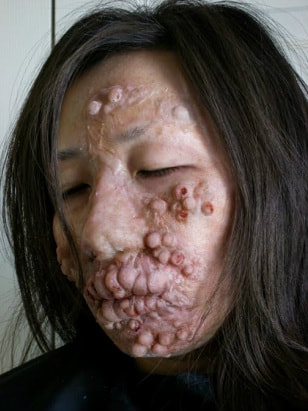|
Leprosy
Leprosy is caused by mycobacterium leprae Mycobacterium leprae can be detected with examination of skin lesions by microscopic examination or lepromin skin test. Mycobacterium leprae may also be detected via culture. Armadillos is a reservoir for leprosy. Leprosy is an acid fast rod with a mycolic acid in the cell wall. Mycobacterium leprae will replicate in the Schwann cells and macrophages. There are two forms of leprosy. These are the lepromatous leprosy and tuberculoid leprosy. Lepromatous leprosy may present with extensive damage to the nerve and tissue and infectious lesion of the skin. Lepromatous lesions are lepromin negative. Lepromatous leprosy may present with lacking of the specific cell mediated immune response which lead to replication of the organism and cause extensive damage to the skin with systemic spread. Tuberculoid leprosy may present with formation of granuloma, macular lesion of the skin and damage to the peripheral nerve. Tuberculoid lesions are lepromin positive. Tuberculoid lesion of the skin consists of granulomas. Leprosy may be transmitted via person to person contact.The treatment of leprosy may include combination antibiotic therapy such as rifampin, dapsone and clofazimine. Chemoprophylaxis is considered in exposed person.
0 Comments
Leave a Reply. |
Kembara's Health SolutionsDiscovering the world of health and medicine. Archives
June 2023
Categories
All
|


 RSS Feed
RSS Feed